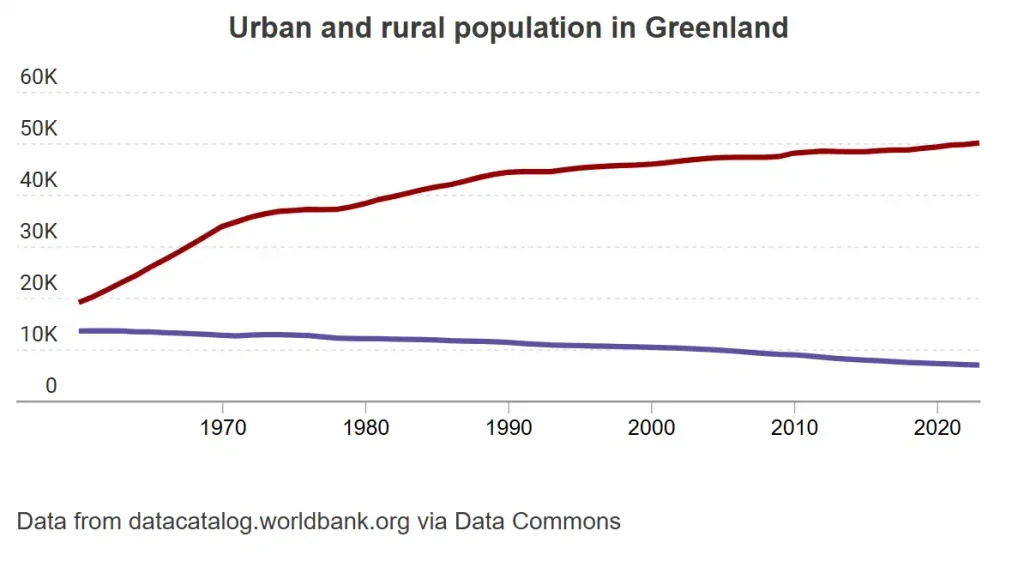With the beginning of 2025, the world witnessed a bizarre geopolitical moment. To be U.S. President Donald Trump expressed interest in buying Greenland, an autonomous territory of Denmark. This unexpected proposal triggered waves of curiosity and internet searches about Greenland. As a result, Greenland saw a surge in global attention and, surprisingly, a rise in tourism interest. But amidst the intrigue, a common question emerged – why is Greenland called “Greenland” when most of it is covered in ice?
In this blog, we’ll explore Trump’s interest in Greenland, the sudden tourism boost, and the fascinating history behind Greenland’s misleading name.
Trump Wants Greenland

Trump publicly revealed his intention to purchase Greenland. The idea left many bewildered. Greenland, the world’s largest island, is home to around 56,000 people and a vast, ice-covered landscape. Although the Danish government quickly dismissed the proposal, the incident sparked widespread media coverage.
Trump argued that Greenland held strategic value for the U.S. due to its location between North America and Europe. The Arctic region is becoming increasingly important because of melting ice, opening up new shipping routes and exposing valuable natural resources.
While the idea of purchasing land from another country seemed unusual, it wasn’t unprecedented. In 1867, the U.S. bought Alaska from Russia. Trump’s Greenland proposal, however, highlighted the ongoing geopolitical interest in the Arctic.
The Google Surge: Why Are People Searching for Greenland?
Trump’s announcement had an unexpected side effect. Google reported a surge in searches related to Greenland. People wanted to learn more about this mysterious icy island. Many were surprised to discover Greenland’s stunning landscapes, unique wildlife, and indigenous Inuit culture.
Tourism to Greenland saw a significant rise in the following years. The curiosity driven by Trump’s proposal transformed into a desire to experience Greenland firsthand. Tourists flocked to see the Northern Lights, glaciers, and fjords, while adventurers sought out activities like dog sledding and ice fishing.
Greenland’s Allure: A Land of Ice and Wonders
Greenland may not be the easiest travel destination, but those who visit are rewarded with breathtaking natural beauty. The island offers:
- Northern Lights: One of the best places to witness the aurora borealis.
- Icebergs and Glaciers: Towering ice formations are a sight to behold.
- Wildlife: Polar bears, whales, and seals are common in Greenland’s waters.
- Inuit Culture: Rich traditions and communities that have lived in harmony with nature for centuries.
Why is Greenland Called “Greenland”?
One of the most puzzling facts about Greenland is its name. How can a land covered in ice be called Greenland?
The answer lies in history. Around 982 AD, Erik the Red, a Norse explorer, was exiled from Iceland. According to the sagas, Erik wanted to entice settlers to the new land he had discovered. To make it sound appealing, he named it “Greenland.” The name was a form of early marketing. By giving the island a lush name, Erik hoped to attract more people to settle there.
However, historical evidence suggests that parts of Greenland may have been greener during Erik’s time, particularly along the coastal areas. The climate was warmer, and there were patches of grass and low vegetation. But over time, Greenland became predominantly ice-covered.
Greenland vs. Iceland: A Tale of Two Names
Adding to the confusion is Iceland’s name. Iceland is relatively green compared to Greenland, especially in summer. The reason for Iceland’s name stems from early settlers who wanted to deter outsiders. By calling it Iceland, they hoped to discourage potential invaders and competitors.
In short, Greenland and Iceland’s names are products of both marketing and misdirection.
The Impact of Climate Change
Today, Greenland is at the forefront of climate change discussions. The island’s ice sheets are melting at an alarming rate, contributing to rising sea levels. As the Arctic warms, Greenland is attracting not only tourists but also researchers and politicians.
Greenland’s ice holds enough water to raise global sea levels by over 7 meters if it melts completely. This makes it a critical area for climate scientists studying the effects of global warming.
Tourism in Greenland: What to Expect
If you’re considering a trip to Greenland, here are a few things to keep in mind:
- Seasonal Travel: Summer (June to August) is the best time to visit, with milder temperatures and longer days.
- Remote Destinations: Many areas are accessible only by boat or small plane.
- Eco-Tourism: Greenland offers eco-friendly travel experiences, ensuring the preservation of its natural environment.
Greenland: More Than Just Ice
Trump’s interest in Greenland may have started as a political curiosity, but it led to increased global awareness about this fascinating land. Greenland’s natural beauty, unique history, and the mysteries behind its name continue to captivate people worldwide.
So, the next time you wonder why Greenland is icy and Iceland is green, remember that names can be deceiving – but the allure of Greenland is very real.
You may also like:
FAQs
1. Why did Trump want to buy Greenland?
Trump believed Greenland held strategic value due to its location and natural resources. He saw it as an opportunity to expand U.S. influence in the Arctic.
2. Is Greenland really covered in ice?
Yes, about 80% of Greenland is covered by ice. The ice sheet is one of the largest in the world.
3. Can you visit Greenland as a tourist?
Absolutely! Greenland offers unique experiences like glacier tours, wildlife spotting, and cultural excursions.
4. What is the best time to visit Greenland?
Summer (June to August) is the best time to visit, with milder temperatures and long daylight hours.


